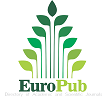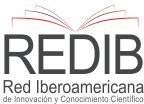Ideal female body & diet culture
Challenges and recommendations for today’s woman
Abstract
In all ages, the ideal of the female body is determined by the concept of beauty of each culture, according to the traditions or problems of society. For example, in Egyptian culture, women were appreciated if they have a slim body, narrow back, small waist, long legs, and a symmetrical face. Since the year 2000 to nowadays, the ideal female body also consists of maintaining a slim complexion, but highlighting the muscular area of the bust, buttocks, abdominal zone and thighs. That is why currently a woman tries to achieve this ideal of a female body in different ways, which can put physical and mental health at risk. On the one hand, she manipulates the photographs she shares on social networks; and on the other, she follows different food trend diets that do not meet the parameters of a correct diet, or worse, she adopts risky eating behaviors. It is important to promote a healthy lifestyle and not consider health only as something reductionist, immediate and fleeting; because a woman identity is made up of physical, mental and social components. Therefore, in this brief review it is recommended to practice integral health, through knowledge of scientific evidence compatible with women.
Downloads
References
Aliño, L. (2020). Bioética clínica: la mujer ante los retos de la bioética clínica actual. Apuntes de bioética, 3(2), 39–47. https://doi.org/10.35383/apuntes.v3i2.497
Association of American Medical Colleges (AAMC). (1999). Report III: Contemporary Issues in Medicine: Communication in Medicine, Medical School Objectives Project. Association of American Medical Colleges, 25–26.
Anderson, E., y Durstine, J. (2019). Physical activity, exercise, and chronic diseases: A brief review. Sports Medicine and Health Science, 1(1), 3–10.
Arbour, M., Stec, M., Walker, K., y Wika, J. (2021). Clinical Implications for Women of a Low-Carbohydrate or Ketogenic Diet With Intermittent Fasting. Nursing for Women’s Health, 25(2), 139–151. https://doi.org/10.1016/j.nwh.2021.01.009
Bezares, V., Cruz, R., Burgos, M. y Barrera, M. (2014). Evaluación del estado de nutrición en el ciclo vital humano. México: Mc-Graw Hill Interamericana Editores.
Bischoff, S. y Schweinlin, A. (2020). Obesity therapy. Clinical Nutrition ESPEN. https://doi.org/10.1016/j.clnesp.2020.04.013
Brown, J., Isaacs, J., Krinke, U., Letchtenberg, E., Murtaugh, M., Sharbaugh, C., Splett, P., Stang, J. y Wooldridge, N. (2014). Nutrición en las diferentes etapas de la vida. México: Mc-Graw Hill Interamericana Editores.
Bunsell, T. (2013). Strong and Hard Women: An ethnography of female bodybuilding. Londres: Routledge.
Cage, C. (06 de octubre de 2017). Confessions of a retoucher: how the modelling industry is harming women. The Sydney Morning Herald. https://bit.ly/3dsBN1F
Camacho-Miñano, M., MacIsaac, S., y Rich, E. (2019). Postfeminist biopedagogies of Instagram: Young women learning about bodies, health and fitness. Sport, Education and Society, 24(6), 651–664. https://doi.org/10.1080/13573322.2019.161397
Cook, C. (2015). Incorporating positive body image into the treatment of eating disorders: A model for attunement and mindful self-care. Body Image, 14, 158–167. https://doi:10.1016/j.bodyim.2015.03.004
Costa, I., Gill, P., Morda, R., y Ali, L. (2019). “More than a diet”: A qualitative investigation of young vegan Women’s relationship to food. Appetite, 104418. https://doi.org/10.1016/j.appet.2019.104418
Cruz, E. y Pino, J. (2009) Estilo de vida relacionado con la salud. Facultad de Ciencias del Deporte: Universidad de Murcia.
Cruz, R., Coop, F., Cárdenas, S. y Ávila, M. (2019). Perception of Body Image in Maya Adolescents and its Relationship with Body Dissatisfaction and Nutritional Status. Journal of Nutrition & Food Sciences, 9, 756. https://doi.org/10.35248/2155-9600.19.9.756
El Taguri, A., Dabbas, M., Goulet, O. y Ricour, C. (2009). The use of body mass index for measurement of fat mass in children is highly dependant on abdominal fat. EMHJ - Eastern Mediterranean Health Journal, 15 (3), 563-573, 2009
Freire, R. (2020). Scientific evidence of diets for weight loss: Different macronutrient composition, intermittent fasting, and popular diets. Nutrition, 69. https://doi.org/10.1016/j.nut.2019.07.001
Fundación Dieta Mediterránea. (2010). La Pirámide. https://bit.ly/3rU1a4E
Lee, E., Celestino, M. y Koeppel, K. (27 de enero de 2015). Women's Ideal Body Types Throughout History. BuzzFeed. https://bzfd.it/3y5Ok4p
McBride, C., Costello, N., Ambwani, S., Wilhite, B., y Austin, S. (2019). Digital Manipulation of Images of Models’ Appearance in Advertising: Strategies for Action Through Law and Corporate Social Responsibility Incentives to Protect Public Health. American Journal of Law & Medicine, 45(1), 7–31. https://doi.org/10.1177/0098858819849990
McLean, S., Paxton, S., Wertheim, E., y Masters, J. (2015). Photoshopping the selfie: Self photo editing and photo investment are associated with body dissatisfaction in adolescent girls. International Journal of Eating Disorders, 48(8), 1132–1140. https://doi.org/10.1002/eat.22449
Meléndez, J., Moreno, I., Cañez, G. y Nuñez, G. (2018). Prácticas corporales y alimentarias de mujeres adultas del noroeste de México. Una aproximación al cuidado corporal femenino. Revista de investigación y divulgación sobre los estudios de género, 23, 169-198.
Morales, J., Nava, G., Esquivel, J. y Díaz, L. (2011). Principios de ética, bioética y conocimiento del hombre. México: Universidad Autónoma del Estado de Hidalgo.
Morales, T. (2011) Forja de hombres. Madrid: Biblioteca de Autores Cristianos.
Organización Mundial de la Salud (OMS). (2014). Documentos básicos. – 48.ª ed. WHO. https://bit.ly/3rLJeJl
Padilla, N. y Huapaya, R. (2020). Reflexiones bioéticas sobre la mujer y lo femenino desde el personalismo
de Karol Wojtyla. Apuntes de bioética, 3(2), 143–153. https://doi.org/10.35383/apuntes.v3i2.480
Palmer, A. (2018). A Cultural History of Dress and Fashion in the Modern Age. Londres: Bloomsbury Publishing.
Pérez, A. y Marvan, L. (2005). Manual de dietas normales y terapéuticas: Los alimentos en la salud y la enfermedad 5a edición. México: Editorial La Prensa Médica Mexicana.
Ponce, C., Turpo, K., Salazar, S., Viteri, L., Carhuancho, J. y Taype. A. (2017). Trastornos de la conducta alimentaria en estudiantes de medicina de una universidad de Perú. Revista Cubana de Salud Pública, 43(4), 551–561.
Quinte, S., Alania, R., y Flores, V. (2020). La imagen de la juventud en la publicidad televisiva del Perú. Horizonte De La Ciencia, 4(1), 126-142. https://doi.org/10.26490/uncp.sl.2020.4.1.514
Ramachandran, D., Kite, J., Vassallo, A., Chau, J., Partridge, S., Freeman, B., y Gill, T. (2018). Food Trends and Popular Nutrition Advice Online - Implications for Public Health. Online Journal of Public Health Informatics, 10(2), e213. https://doi.org/10.5210/ojphi.v10i2.9306
Ravussin, E., Gilmore, L., y Redman, L. (2016). Calorie Restriction in Humans. Molecular Basis of Nutrition and Aging, 677–692. https://doi.org/10.1016/b978-0-12-801816-3.00048-0
Rodríguez, S. y Cruz S. (2008). Body dissatisfaction in Latin American adolescents and Spanish. Psicothema, 20, 131–137.
Rosas, M., Concha, V., Oliveira, L. y Tibau, K. (2018). Restricción alimentaria intermitente: repercusiones en la regulación de la homeostasis energética hipotalámica y tejido adiposo. Anales de la Facultad de Medicina, 79(4), 331-337. https://dx.doi.org/10.15381/anales.v79i4.15640
Secretaria de Salud (SSA). (2013). Norma Oficial Mexicana NOM-043-SSA2-2012, Servicios básicos de salud. Promoción y educación para la salud en materia alimentaria. Criterios para brindar orientación. https://bit.ly/3dwZlSN
Stice, E., Marti, C. y Durant, S. (2011). Risk factors for onset of eating disorders: Evidence of multiple risk pathways from an 8-year prospective study. Behaviour Research and Therapy, 49(10), 622–627. https://doi.org/10.1016/j.brat.2011.06.009
Swan, W., Vivanti, A., Hakel, N., Hotson, B., Orrevall, Y., Trostler, N., Beck, K. y Papoutsakis, C. (2017). Nutrition Care Process and Model update: Toward realizing people-centered care and outcomes management. Journal of the Academy of Nutrition and Dietetics, 117(12), 2212–2672 https://doi.org/10.1016/j.jand.2017.07.015
Urrutia, A. (2017). Después del hambre: una auto-etnografía sobre el cuerpo femenino luego de vivir escasez alimenticia en Perú. Revista Latinoamericana de Estudios sobre Cuerpos, Emociones y Sociedad, 24(9), 47-60.
Warren, J., Smith, N., y Ashwell, M. (2017). A structured literature review on the role of mindfulness, mindful eating and intuitive eating in changing eating behaviours: Effectiveness and associated potential mechanisms. Nutrition Research Reviews, 30(2), 272-283. https://doi.org/10.1017/S0954422417000154
Yumuk, V., Tsigos, C., Fried, M., Schindler, K., Busetto, L., Micic, D. y Toplak, H. (2015). European Guidelines for Obesity Management in Adults. Obesity facts, 8(6), 402–424. https://doi.org/10.1159/000442721
The authors retain copyright.
This work is under international license Creative Commons Attribution 4.0.
The articles published by the scientific journal "Notes on Bioethics" of the Universidad Catolica Santo Toribio de Mogrovejo, Chiclayo Peru, can be shared through the international public license Creative Commons Attribution CC BY 4.0
























 LIBRARY USAT
LIBRARY USAT